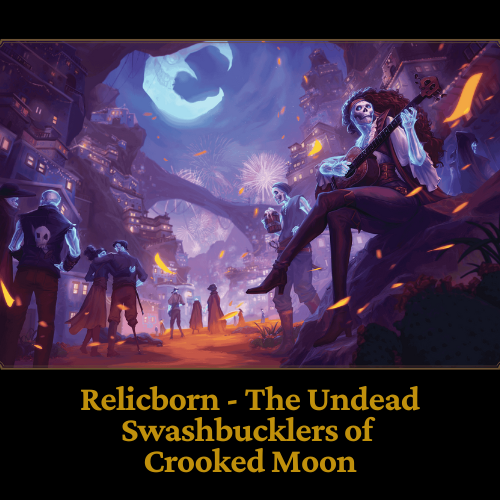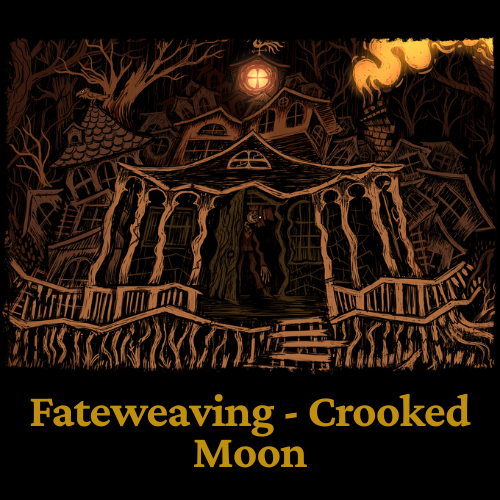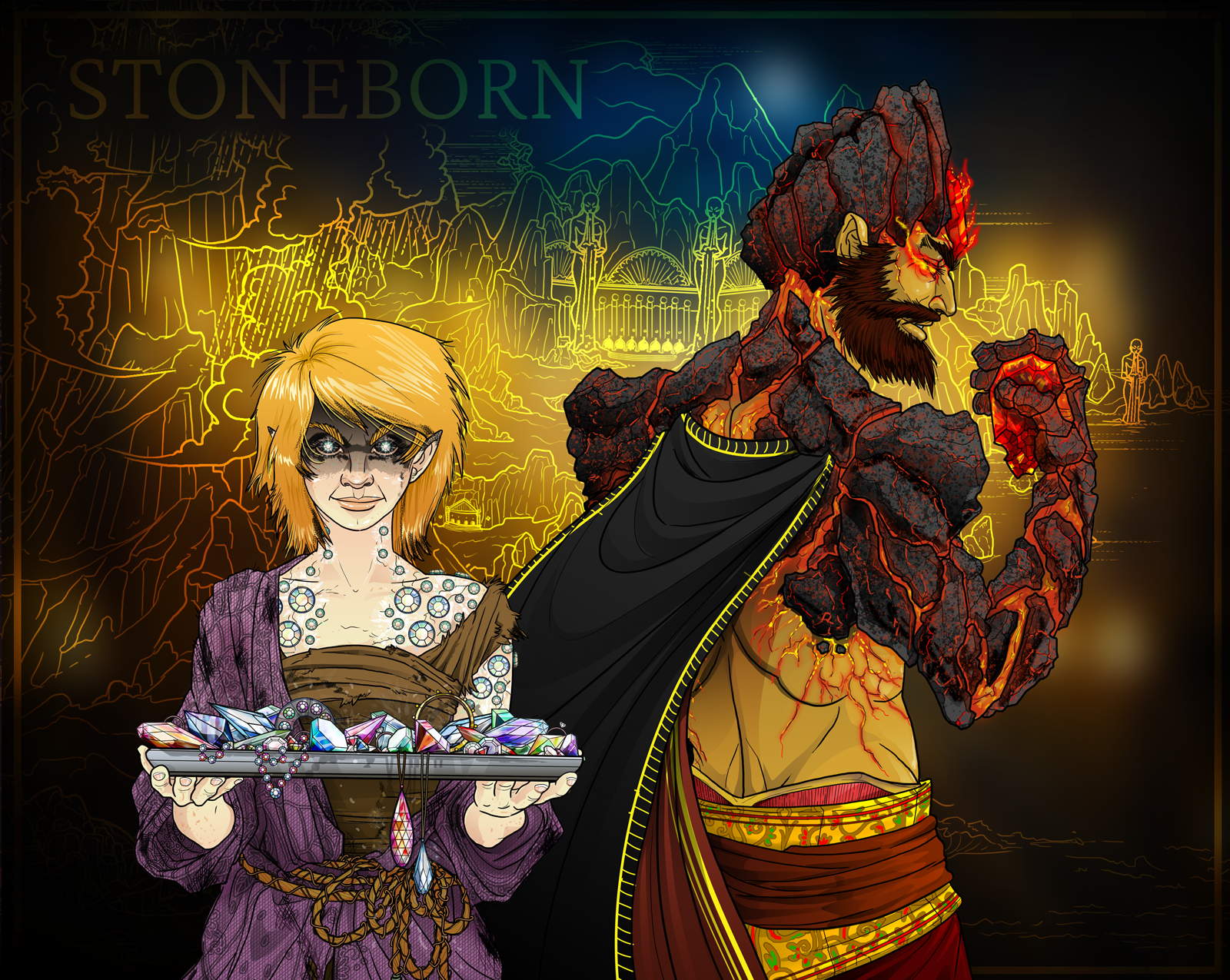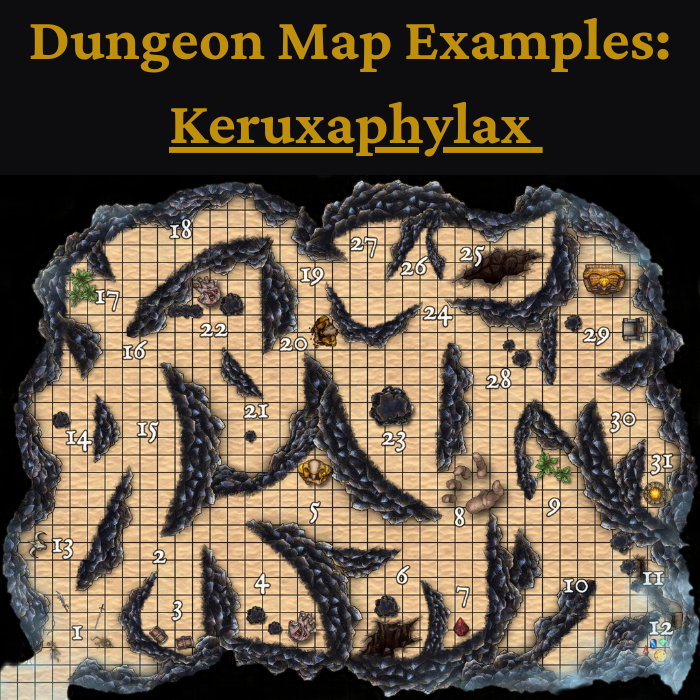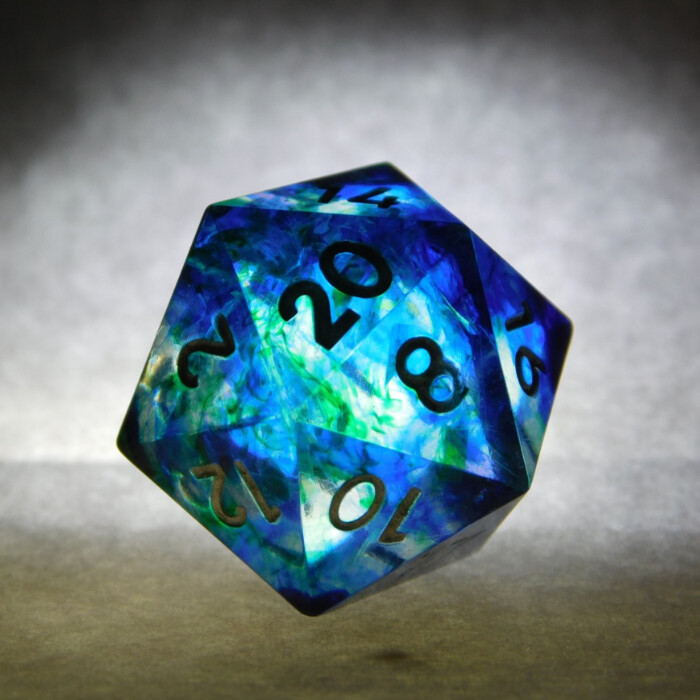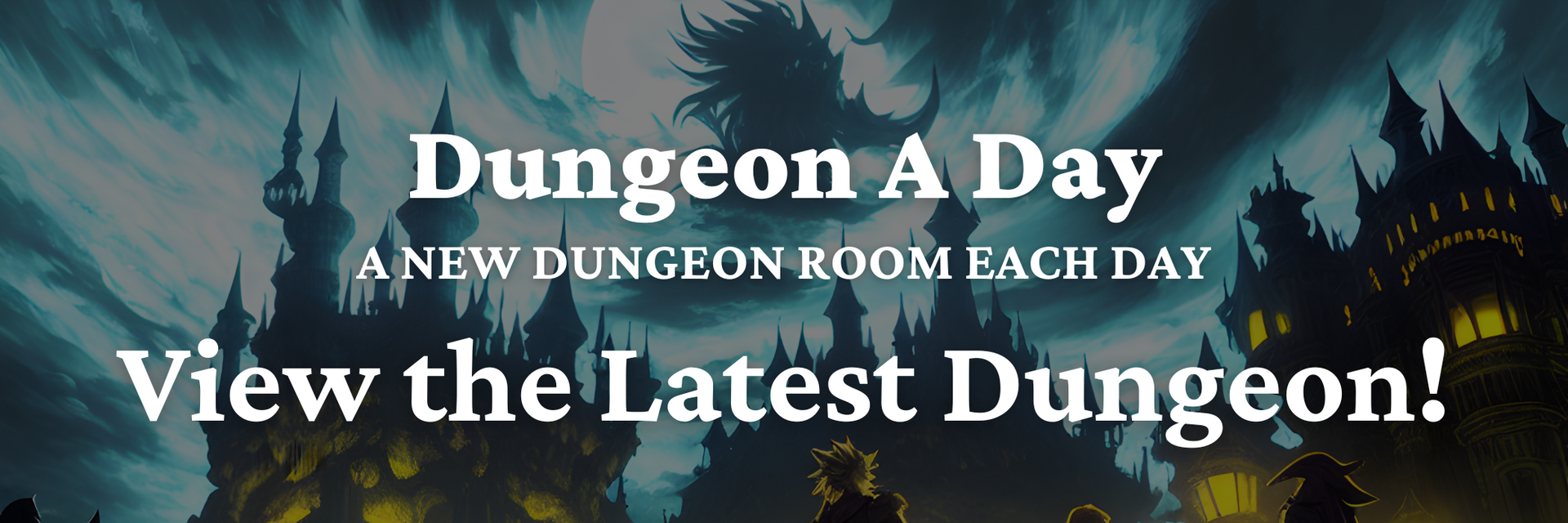Everything About Passive Perception 5e
Passive perception is a pretty interesting and unique game mechanic in D&D 5e. It reminds me of playing Kingdoms of Amalur, and the skill system from that great game.
I always enjoy when TTRPGs utilize simple systems that maintain the story’s flow.
That being said, because D&D is a pretty complex game, and passive perception doesn’t exactly fit cohesively with the way other skill checks work, there’s often a bit of confusion around the topic.
At the end of the day, there’s always more to learn about D&D, for both pros and beginners, and passive perception 5e is one of the most valuable tools, making it worthy of a full article!
So, let’s dive into passive perception 5e and see how it can make your game more exciting.

As a dungeon master, I feel that good usage of Passive Perception begins with a cool atmosphere for players to passively perceive, during the game.
What Is Passive Perception 5e?
Passive perception 5e is a player character’s ability to observe their surroundings without making an active search. Passive perception is your character’s skill score “floor,” that represents keen senses – a passive check made through the perception skill modifier.
The higher your character’s passive perception score, the more likely you can notice the signs of an impending ambush, spot traps, and generally make it harder for your character to get surprise. Passive perception 5e is an excellent mechanic that decides how much your character notices, without rolling the dice or specifically looking for something.
And yes – that is correct – passive perception 5e does not require a dice roll. Instead, the dungeon master compares each player’s passive perception score to the DC (difficulty check) of hidden areas and objects.
Passive perception keeps the game moving, and only reveals hidden elements of the game world to keen characters. This mechanic also rewards players who have invested more into their character’s Wisdom ability score, and perception skill.
Passive Perception is often used by the DM to determine if the characters notice traps, secret doors, hidden enemies, or other subtle details in their surroundings. It allows for a more immersive and dynamic gameplay experience without requiring constant perception checks for every little detail.
How Does Passive Perception Work in D&D 5e?
The Dungeon Master (DM) compares the Passive Perception score of characters involved in a passive perception check to the Difficulty Class (DC) of any hidden or obscured objects or creatures in the environment.
If the Passive Perception score is equal to or higher than the DC, the character automatically notices the hidden or obscured thing without needing to roll a perception check. If the Passive Perception score is lower than the DC, the character remains unaware of the hidden or obscured thing unless they actively search for it and roll a perception check.
What is My Passive Perception Score?
The passive perception is 10+ the character’s wisdom modifier + their proficiency bonus if they are proficient in perception. Perception uses wisdom ability score by default, so you should add that when figuring out your passive perception.
The easiest way to look at it, is that your character's Passive Perception score is calculated by adding 10 to their Wisdom (Perception) skill modifier. For example, if a character has a Wisdom modifier of +2, their Passive Perception would be 12 (10 + 2).
Generally, you can find the box for your passive perception on your character sheet. It’s below your base ability scores in Strength, Dexterity, Constitution, Intelligence, Wisdom, and Charisma.
Passive perception 5e gets a little complex when you factor in advantages or disadvantages. Characters rolling a skill check with an advantage can add +5 to their passive check or subtract -5 with a disadvantage. But in reality, passive perception is more of a dungeon master thing anyways, so it’s really nothing players need to worry about.
How Important Is Passive Perception?
I usually approach passive perception with a grain of salt... I would never say that passive perception 5e is so important, for example, that the party should have to worry about a TPK if they don't have high enough scores.
That being said, having a high Passive Perception score in D&D 5e is quite important for several reasons:
- Detect hidden or obscured objects: A high Passive Perception score increases the likelihood of noticing hidden traps, secret doors, or other concealed objects in the environment. This can help prevent potentially dangerous or harmful situations.
- Spot hidden enemies: A high Passive Perception score may allow characters to detect hidden or stealthy enemies before they have a chance to ambush or surprise the party. This can be crucial in combat encounters, as it gives characters a chance to prepare or strategize.
- Gather information: A high Passive Perception score helps characters gather important information about their surroundings. They may notice subtle details such as strange markings, hidden symbols, or unusual sounds, which can provide clues or hints about the world or ongoing events.
- Immersion and roleplaying: A high Passive Perception score can enhance the immersion and roleplaying aspects of the game. Characters with keen senses and high awareness are more likely to notice and interact with their environment, making the game world feel more alive and dynamic.
It's worth noting that while a high Passive Perception score is beneficial, it is not the only way to detect hidden or obscured creatures, items, or things.
Characters can still actively search for hidden objects or make perception checks when they suspect something is amiss, for example. Additionally, other abilities or spells, such as the spell "Detect Magic" or the Rogue class feature "Evasion," can also aid in detecting hidden or magical objects or creatures.
It should also be obvious - but as a side note, passive perception is not something that works for single player DnD. That being said, you can always put traps, NPCs, adventure ideas into a jar, and roll for "passive perception" DC to see if your character notices something important.
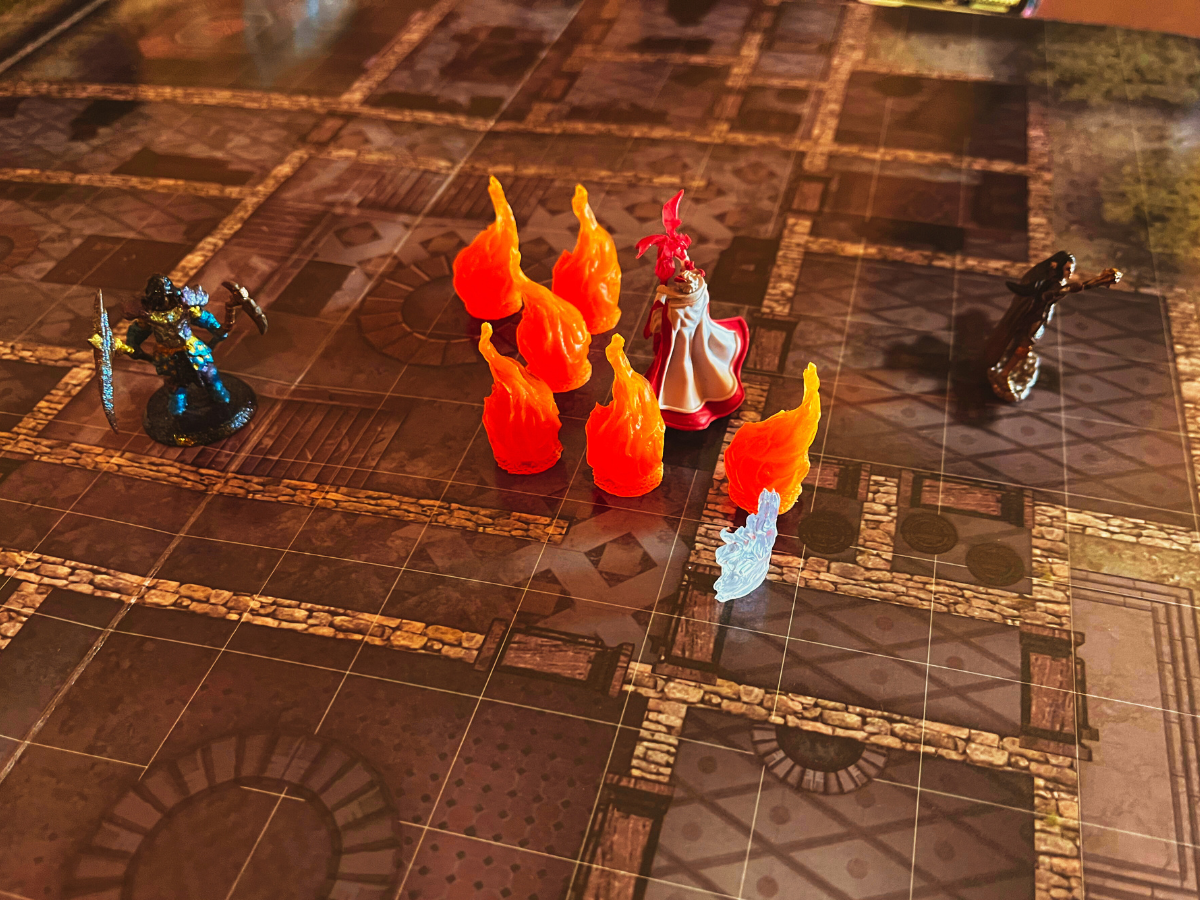
Passive Perception 5e saves characters from the grim fate of Fireball traps...
20-Passive Perception Is Very Good
Generally, for an RPG campaign that’s well under way, a passive perception score of 20 is considered rock solid.
However, “good” passive perception really depends on what level your character’s currently at, and what you want your character to achieve. Getting to a passive perception score of 20 requires a high wisdom modifier, proficiency bonus, and taking the “Observant” feat.
15-Passive Perception is Usually Good Enough
Of course, I always want to have as high passive perception 5e as possible. But for me, a passive perception of 15 is “good enough,” for most campaigns.
I If you want to aim for 20 or even 32 passive perception, go for it! When it comes to D&D 5e though, you just really have to specialize to get to those kind of numbers.
For example, you can get to 32-passive perception if you have 20 wisdom (for +5), expertise for +12 at level 17, and the “Observant” feat for +5. Add these to your base 10, and you get 32-passive perception.
When you add up all these bonuses and really think about it, it’s not at all that easy to get a character to have 32-passive perception since you really have to give up a lot of otherwise valuable character perks to get there.
So, I recommend trying out 15-passive perception as a starting place, and see how that feels for your campaign.
How to Boost Your Passive Perception
There are several ways to increase your passive perception. I’ll start with these four primary options:
- Have a high base wisdom modifier.
- Take the “Observant” feat.
- Gain proficiency in perception.
- Increase your character’s wisdom modifier with magic items.
Note that you can (normally) boost your passive perception up to a maximum score of 32, which is absolutely crazy levels of perception.
Imagine what you can do with passive perception 5e of that magnitude. Basically, your character could notice every single detail about every single place, person, and environment they ever visit...
Let’s dive deeper into the three passive perception 5e boosters.
Wisdom Modifier
Your wisdom modifier is a critical factor in passive perception. The higher your wisdom modifier, the higher passive perception you can have.
To increase this, you can take a feat or assign ability score points every four levels. Classes like clerics and druids tend to have higher wisdom modifiers, meaning they’re more likely to get higher passive perception scores.
You can also select a race that provides a base Wisdom modifier bonus, such as a wood elf, halfling, or water genasi.
Observant Feat
The observant feat gives your character a +5 bonus to passive perception 5e and investigation rolls. It also gives slight boosts to intelligence and wisdom scores! Basically, there are three advantages to taking this feat:
- Increase intelligence or wisdom by one, for each time you select this feat (to a maximum of 20).
- Read lips and interpreting what a creature/ person is saying, even from a distance, and even if you can’t actually hear them.
- Gain a +5 bonus to passive perception and investigation scores.
Skill Proficiency
Perhaps the best way to boost your passive perception in 5e is to ensure your proficiency in perception. Remember, you can always add your proficiency bonus to any check! Moreover, your proficiency bonus increases as you level up.
Proficiency bonus in 5e starts with a +2 and can go all the way up to +6. When it comes to passive perception, even a +2 is a big deal, while +6 is absolutely game-changing.
Magic Items
Finally, consider acquiring and equipping your character with items that can boost their wisdom score (and proficiency bonus, too). For example:
- Ioun Stone of Mastery: sourced from the Dungeon Master’s Guide, this magic item adds a +1 proficiency bonus.
- Deck of Many Things (Star): adds +1 to the ability score of your choice (up to a maximum of 24).
- Tome of Clear Thought: adds +2 to wisdom.
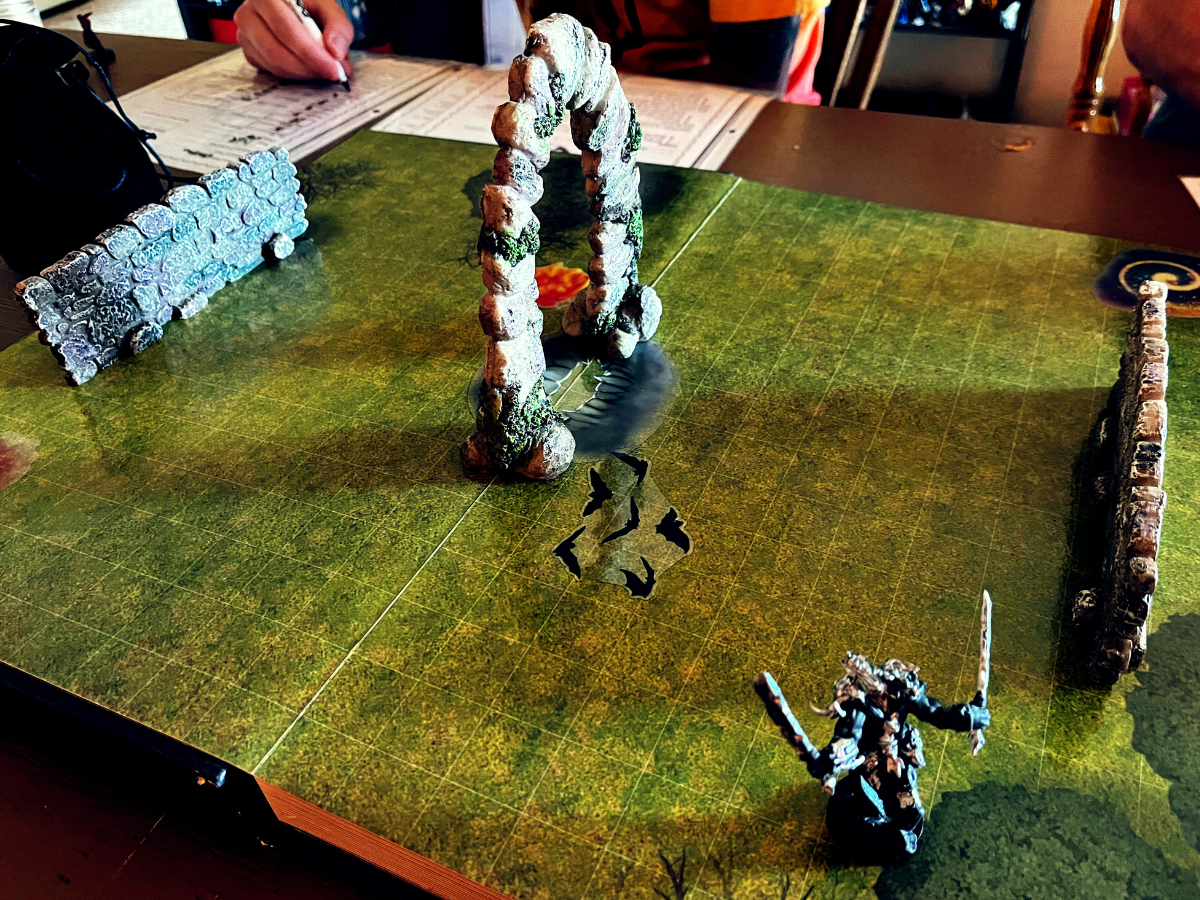
Ondscioth had a Passive Perception of 16 - just barely high enough to notice the dimensional fangs located immediately below the "Dark Realm's" archway.
Classes That Benefit Most from Passive Perception 5e
Some classes benefit more from having a high passive perception score, than others. At the top of my list I’d include the Rogue and Bard, who both have the class feature, “Expertise,” which doubles the proficiency bonus awarded to their proficient skills.
Let’s play by the basic rules, and consider a max-level Bard or Rogue. Passive perception for a 20th-level Bard could look like:
- 20 wisdom for +5.
- The class feature, “Expertise,” for +12 at level 17.
- The “Observant” feat for +5.
- +5 from having advantage.
- Add the base 10, totaling a passive perception of 37 (which actually goes far above the “normal” max passive perception of 32)!
Is Passive Perception the Most Important Passive Skill?
On basic DnD 5e character sheets, passive perception is actually the only passive skill. It’s the core mechanic for detecting environmental details, hidden creatures, secret doors, and more.
Having some degree of passive perception (again, a score of 15-20) is significantly important if you want your character to become a higher-level adventurer. It matters in many scenarios, and prevents a lot of encounters from becoming unduly dangerous.
However, depending on the D&D group you game with, the dungeon master may also have passive insight and/ or investigation checks. To me, these are basically the same as passive perception, which is probably “supposed” to be something like an umbrella mechanic.
If you have questions about passive skills for your campaign, it’s always just best to check in with your dungeon master on their preferred rules and methods.
Other Possible Passive Skill Checks
As the dungeon master, you can use passive perception 5e in other unique ways to make the game more interesting. Or alternatively, you may create other “passive” skill checks.
For example, you may allow players to use the following Skills, passively:
- Feel magic nearby (Arcana).
- Tell lies before a roll (Deception).
- Gain knowledge on something examined (History and Religions).
- Catch blatant lies (Insight).
- Shut down minor confrontations (Intimidation).
- Intuit complex machines (Investigation).
- Recognize a monster (Nature).
- Avoid getting lost (Survival).
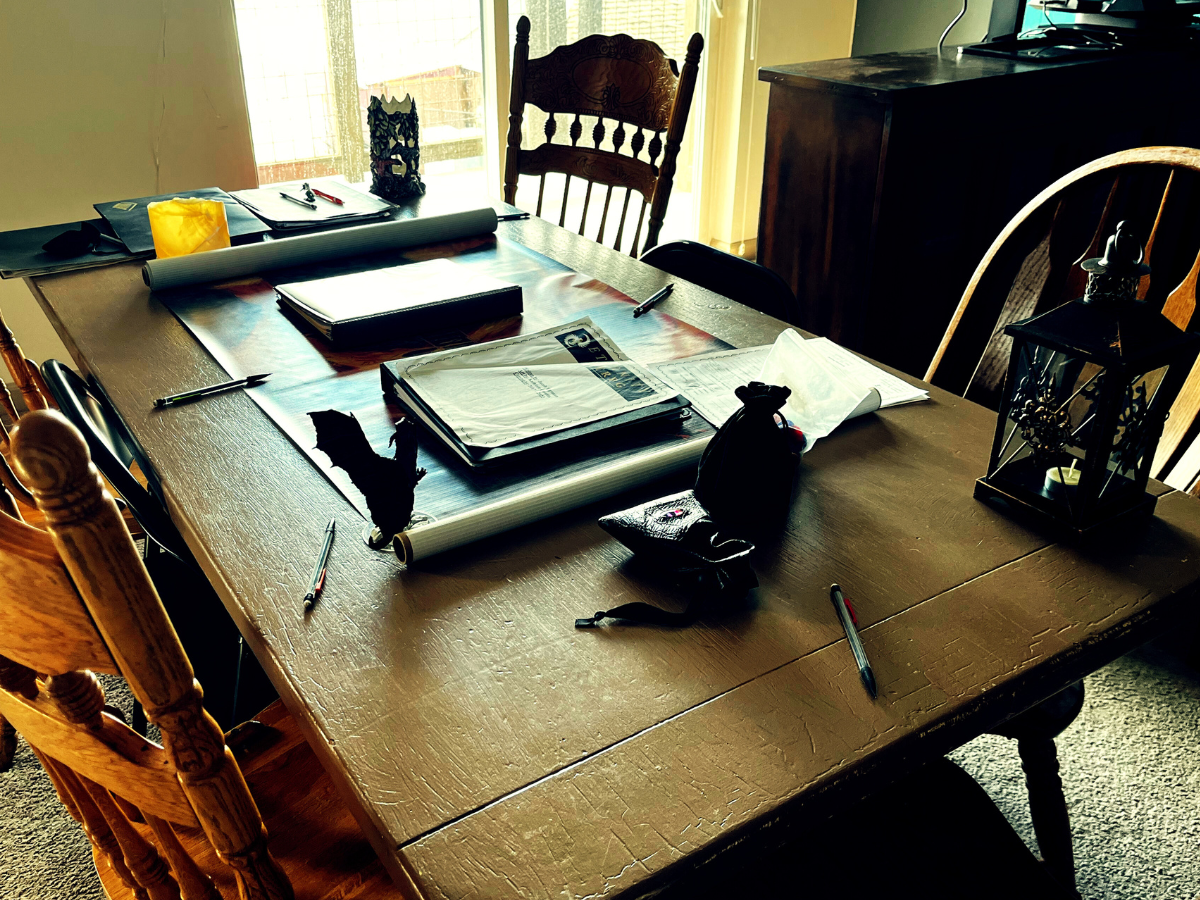
As the Dungeon Master, I always note each player character's Passive Perception, as part of my pre-game prep.
Passive Perception vs Active Perception
Let’s differentiate more between a perception check and passive perception.
Perception is a skill that allows your character to see, hear, or detect. A perception check is something you inform the DM about and roll your d20 for. It’s not a magical spell; it’s something you just do.
On the other hand, passive perception 5e is passive, meaning you actually do it without rolling.
Passive perception 5e is always “enabled,” and your character always has it going regardless of your intent to check something.
Passive Perception Check Example
Let’s say I’m the DM, and the party has just entered a room without bad guys nearby. I can apply passive perception instead of having everyone roll to tell what they see in the room.
Depending on the player characters’ passive perception 5e scores, they may be able to detect the collapsing column traps I have planned for the room, and more.
Active Perception Check Example
Unlike with a passive perception check, a player might say something like, “I check the ornate chest for traps,” and roll a d20.
So, the rogue cautiously examines the ornate chest. They roll a perception check, hoping to spot any hidden mechanisms. With a result of 19, they notice a faint pressure plate beneath the chest, avoiding a potentially deadly trap.
Passive Perception vs Perception Check vs Investigation
There’s a lot of overlap between passive perception, active perception, and investigation. To make things easier, I always remember these two things:
- Perception checks use a character’s active senses.
- Investigation uses abstract abilities.
Perception checks also fall under wisdom, while investigation is intelligence-based.
With a perception check, players can – for example – see where something is out of place. With investigation, players can then put clues together to determine the location of that missing something.
When it comes to passive perception, it’s more about the character’s automatic ability of being always observant. It’s basically just a mechanic to emulate a person’s ability to see and notice details without actively searching for them.
Advantages of Using Passive Perception in Your Game
Passive perception 5e speeds up the game. For example, players don’t have to roll for passive perception, and dungeon masters don’t have to wait for those results.
Furthermore, passive perception allows DMs to keep secrets. Without this mechanic, your DM might ask everyone to make a perception check, tipping off the group that something big is about to happen. With a passive check, however, the group may get a big surprise.
Additionally, when individual players with high passive perception scores spot something like a group of goblins hiding in ambush, they can warn their allies and feel important that their character added something valuable to the group.
Basically, passive perception usage can protect players, and tip them off to upcoming quests, one-shot adventures, NPCs or characters, or even entire campaign story lines.

Passive Perception basically has unlimited use potential. In this dungeon, players were ambushed by a series of dragons who were all arctic, and had been hiding under the heavy snow fall...
When to Use Passive Perception
As a DM, I don’t often ask for a perception roll; in my experience, passive perception is enough. It’s often convenient to check passive perception stats, compare them to passive perception DC, and then narrate the game.
However, in some situations, characters are especially suited to perceive something they wouldn’t otherwise notice with a passive perception. So as the DM, I may give players a chance to roll for perception, actively.
Dungeon master discretion decides when to roll perception checks, but passive perception 5e is the norm. As a DM, I take note of every player’s passive perception to avoid revealing information.
Can “This” be Passively Noticed?
A good question to ask yourself when the need for player character perception arises is, “Why should I roll to detect something that players could already notice passively?”
I often use passive perception to skip excessive or unnecessary rolls, to speed up the game.
For example, if players are walking through a forest, and I have some hidden element planned for the encounter, I always ask myself if it’s possible for their character to notice it passively.
If the answer is “yes,” then there’s really no need for an active perception roll.
As the dungeon master for your group, you can use passive perception 5e in any scenario where passive searching and noticing are possible, and advantageous. As a DM, you must be aware of passive perception scores and use them wisely, as they improve the overall “flow” of your game.
Difficulty Classes for Passive Perception
If you’re the dungeon master for your group, understanding general DCs may help you decide what values to set for your gaming group in any given encounter.
Here’s a guide to setting DCs. More details on each difficulty level are provided, below:
- Very Easy: DC5
- Easy: DC10
- Medium: DC15
- Hard: DC20
- Very Hard: DC25
- Nearly Impossible: DC30
DCs guide Game Masters to determine how difficult checks should be. Just remember, if a player has a passive perception of 20, they can automatically pass “hard” checks.
Easy and Very Easy Checks
The DC of easy tasks is 10, meaning most characters have a passive perception that will automatically pass this check (along with “very easy” checks). The reason for this is that, as a reminder, the base passive perception score is 10.
However, if a character has a negative perception (or Wisdom modifier), they might fail to pass even “easy” passive perception checks.
Medium Checks
A DC of 15 requires higher proficiency, a bonus, or a combination of modifiers. It takes a lot of progress for a character to achieve a passive perception of 15.
If a player creates a wisdom-focused character, however, they can quickly get to this DC. A passive perception of 15 is already in what I would consider to be the “good enough” category of passive perception scores for probably an entire campaign.
Hard Checks
A DC of 20 is already the equivalent for a character of maxing out the wisdom modifier. Achieving a passive perception of 20 may also mean that the character also has a high proficiency bonus.
If you recall from earlier in the article, I rate a passive perception score of 20 as being in the “rock solid” category. Any character with a 20 can reasonable expect to save themselves from a literal ton of grief over the course of their campaign.
Very Hard and Nearly Impossible Checks
To achieve a passive perception score of 25+ requires the “Observant” feat, and quite a bit of specialization. It may be worth it for a single character in an adventuring group to max out, or nearly max out, their passive perception score in this way.
However, it certainly isn’t worthwhile for multiple characters in a group to do so.
It’s worth remembering that in games like DnD, difficulty levels are almost always on a bell curve.
For example, characters may face a few traps in their adventuring career with a DC of 10 or less. Then, they’ll come across a host of traps from DC 15-20. And finally, they’ll only come across a few traps above DC 25.
So, while it may take players a tremendous amount of effort to get their characters to attain a passive perception of 25 or more, the payoff may not be all that worthwhile, as the frequency of how often that high score will actually be utilized is likely to be quite low.
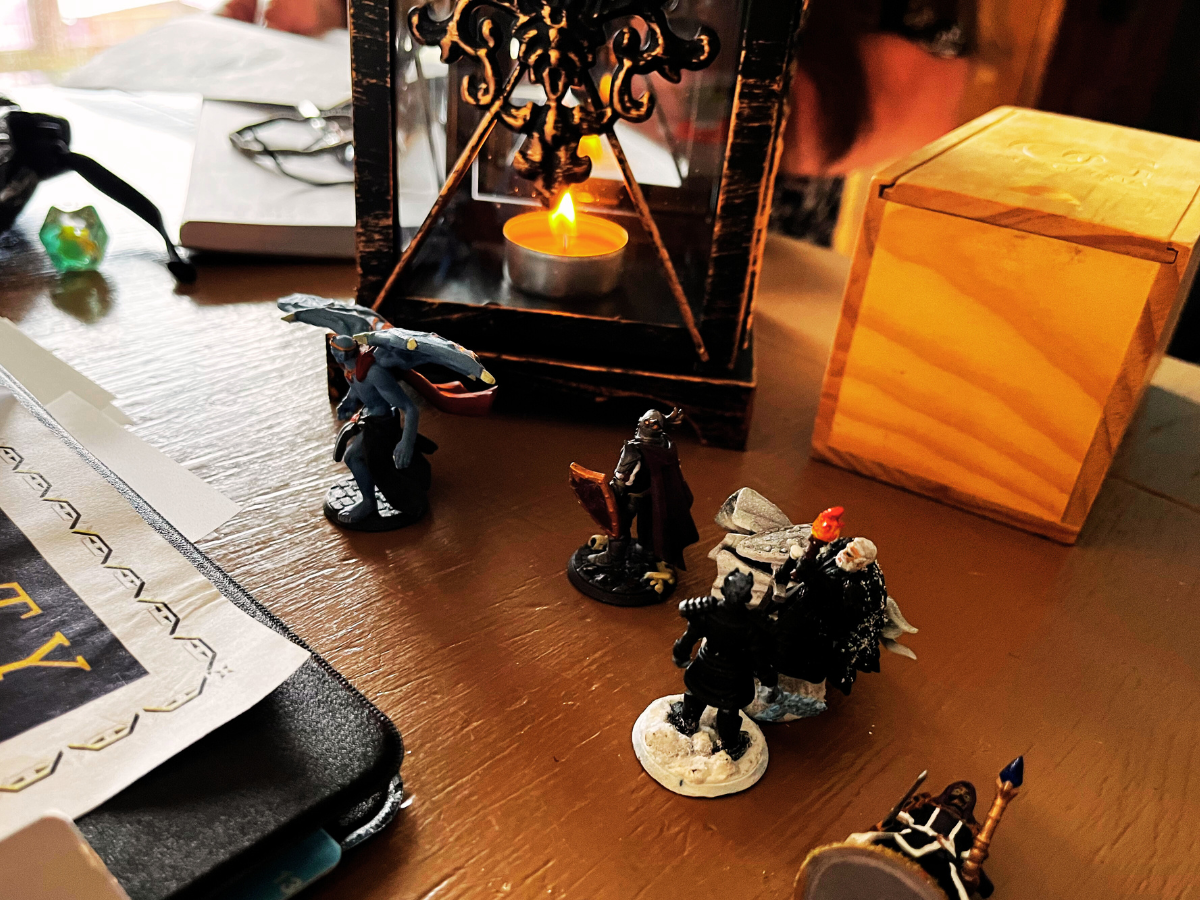
I usually don't let player characters die just because they failed a passive perception. But as the dungeon master, sometimes it's just part of the fun.
Examples of Passive Perception 5e Usage
The mechanic for passive perception 5e allow you and your gaming group to do the following, and more:
- Detect secret doors.
- Spot characters being pick-pocketed.
- Detect traps.
- See hidden or distant creatures.
- Explore environments.
Maximize Passive Perception – as a Player
If you’re a player in your campaign, here are some tips to help you maximize your Passive Perception and make the most out of this important skill.
Invest in Your Passive Perception Score
Passive Perception is based on your Wisdom (Perception) skill modifier. Increasing your Wisdom score or taking proficiency in the Perception skill can significantly boost your Passive Perception.
Consider choosing a race or class that grants bonuses to Wisdom or Perception to further enhance your chances of noticing hidden details.
Be Mindful of Your Environment
Pay attention to description provided by the Dungeon Master. Take note of any hints, sounds, or visual cues that may indicate hidden objects or creatures. Keep in mind that Passive Perception is always active, so being observant of your surroundings can lead to valuable discoveries.
However, if you feel that your dungeon master may be hinting at something present in the environment but no further details are forthcoming, it may be time for an active perception check, just to be sure!
Collaborate with Your Party
Work together with your fellow players to cover more ground. Remember that so long as your party is adventuring together, really only one of you needs to have a high passive perception score.
You may consider talking with your party to determine which of you is best suited to optimize your passive perception score, allowing other characters in the group to specialize in other things.
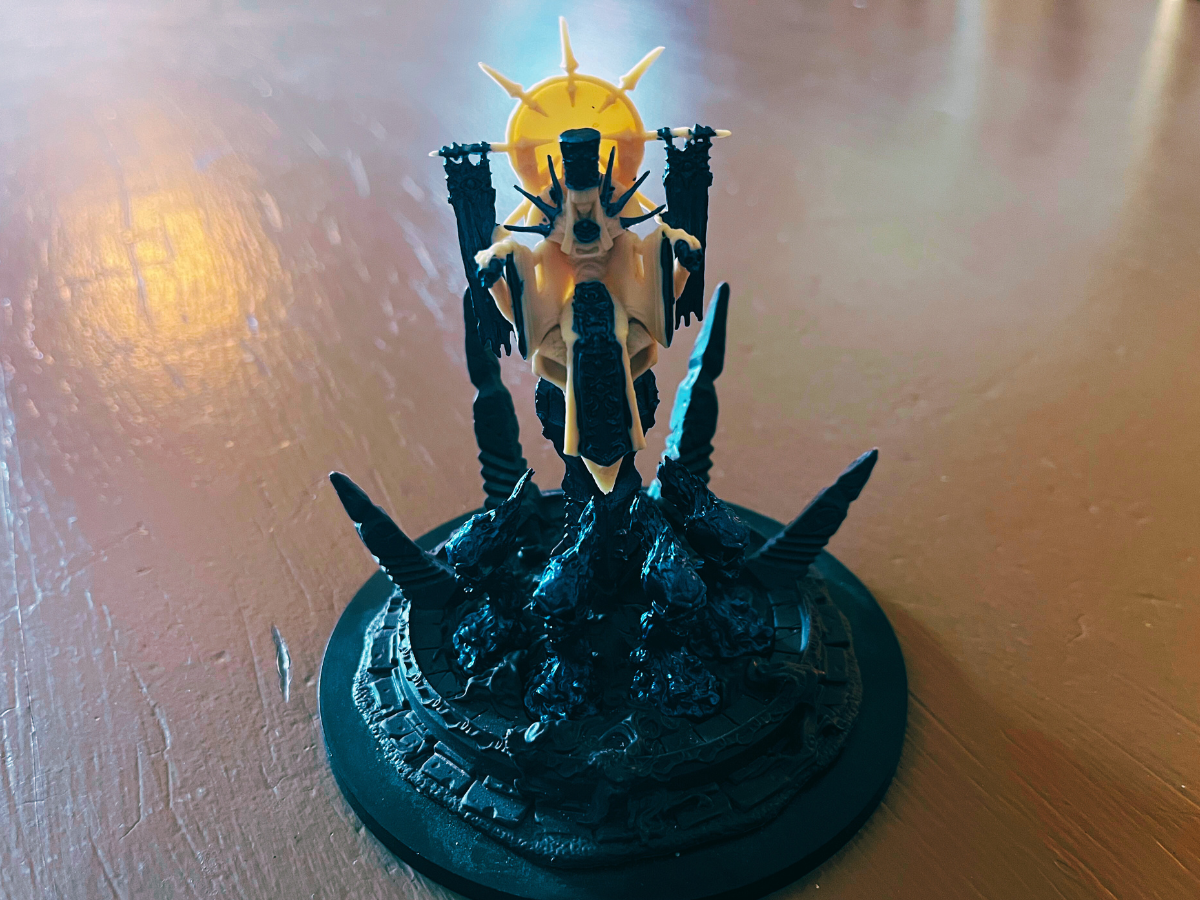
Remember, even monsters have Passive Perception. Especially "boss" monsters/ villains, like Eladriana, the Lich Empress.
Maximize Passive Perception – as a Dungeon Master
As a Dungeon Master in Dungeons & Dragons 5e, you play a crucial role in utilizing Passive Perception to create immersive and challenging gameplay. To keep track of things that require passive perception checks, I always recommend use of a DnD Campaign Planner.
That being said, here are some tips to help you maximize the use of Passive Perception in your campaigns, whether you're starting a new campaign, or adding to an existing one.
Set the Scene
When describing environments, be sure to include subtle details that may require a Passive Perception check. Mention the faint sound of dripping water, the faint glimmer of a hidden object, or the slight movement in the shadows.
These descriptions can prompt players to do more than rely on their Passive Perception, by engaging in an active check. More importantly, however, these small details enhance your players’ immersion into the game world, overall.
Vary DCs and Hidden Objects
Adjust the Difficulty Class (DC) for hidden objects or creatures based on their level of concealment or the importance of the discovery. This allows for a range of challenges, from easily spotted items to more elusive secrets that require higher Passive Perception scores.
Varying the DCs reminds players that investing in passive perception can be valuable, as those with higher scores are often “in-the-know” right away, while others have to wait for concealed information to be shared with them.
Use Passive Perception to Foreshadow
Passive Perception can be a powerful tool for foreshadowing upcoming events. By subtly hinting at hidden dangers or secrets through higher DCs, you can create an atmosphere of anticipation and curiosity.
This anticipation can build tension and excitement as players become more aware of potential threats or rewards lurking in the shadows.
Reward Observant Players
When a player's Passive Perception exceeds the DC for a hidden object or creature, reward their character with additional information or advantages. This can include providing extra details about the environment, granting advantage on subsequent checks, or even allowing them to take preemptive actions in combat encounters.
Rewarding attentive players encourages them to continue paying close attention to the game and reinforces the importance of being observant.
Give Monsters Passive Perception
Don't forget that the player's enemies can have passive perception, as well! Usually, I give my players the chance to roll for their stealth checks (or whatever they're trying to do), and then use that check's overall score as the DC for the passive perception of any nearby foes to try and beat.
Common Mistakes to Avoid about Passive Perception
Here are some common mistakes and misunderstandings to be aware of when it comes to passive perception, to make sure you get the most from this important mechanic in your game, while avoiding its pitfalls.
Passive Perception Replaces Active Perception Checks
One common misconception is that Passive Perception completely replaces the need for active perception checks. This is not true. Passive Perception represents a character's baseline awareness, but active perception checks are still necessary in situations where characters are actively searching or focusing their attention on something specific.
Passive Perception is Always Active
Another mistake is assuming that Passive Perception is constantly active, even during combat or when characters are engaged in other tasks.
Passive Perception is primarily used outside of combat, and when characters are not specifically searching for something. You have to imagine for situations like during combat, for example, characters may be heavily distracted by what’s happening in the moment, which is why passive perception usually “fades” during battle.
Just remember that the DM determines when Passive Perception is relevant, and when it is not, and that passive perception cannot be 100% relied upon at all times.
Passive Perception Detects Everything
Passive Perception is not a catch-all ability that detects every hidden object or creature, automatically. Instead, passive perception only detects things that the DM determines are within the character's perception range and surpass the Difficulty Class (DC) set for the hidden object or creature.
Passive Perception is Solely Based on Wisdom
While Passive Perception is calculated using the Wisdom (Perception) skill modifier, it's not the only factor that affects a character's awareness.
As I’ve covered in this article, class traits, feats, proficiency, magic items, and more also have a profound effect on passive perception, when utilized.
Passive Perception is the Same for All Characters
Each character has their own Passive Perception score, which is determined by their Wisdom (Perception) skill modifier, traits, proficiency, feats, and more.
Each character has their own unique level of passive perception, and just because one character doesn’t notice something when they visit a important-seeming dungeon room doesn’t mean that another character wouldn’t find something!
Passive Perception is Infallible
Passive Perception is a valuable tool, but it isn’t infallible. Passive perception represents a character's baseline awareness, but doesn't guarantee that the character will notice every hidden detail.
There may be situations where even characters with high Passive Perception scores fail to detect something due to exceptional concealment, magical effects, or other factors.
Basically, it's important to remember that D&D is meant to be a challenging and unpredictable game, so passive perception failings may actually be a tool used by the dungeon master in certain cases, to heighten an encounter’s sense of drama.
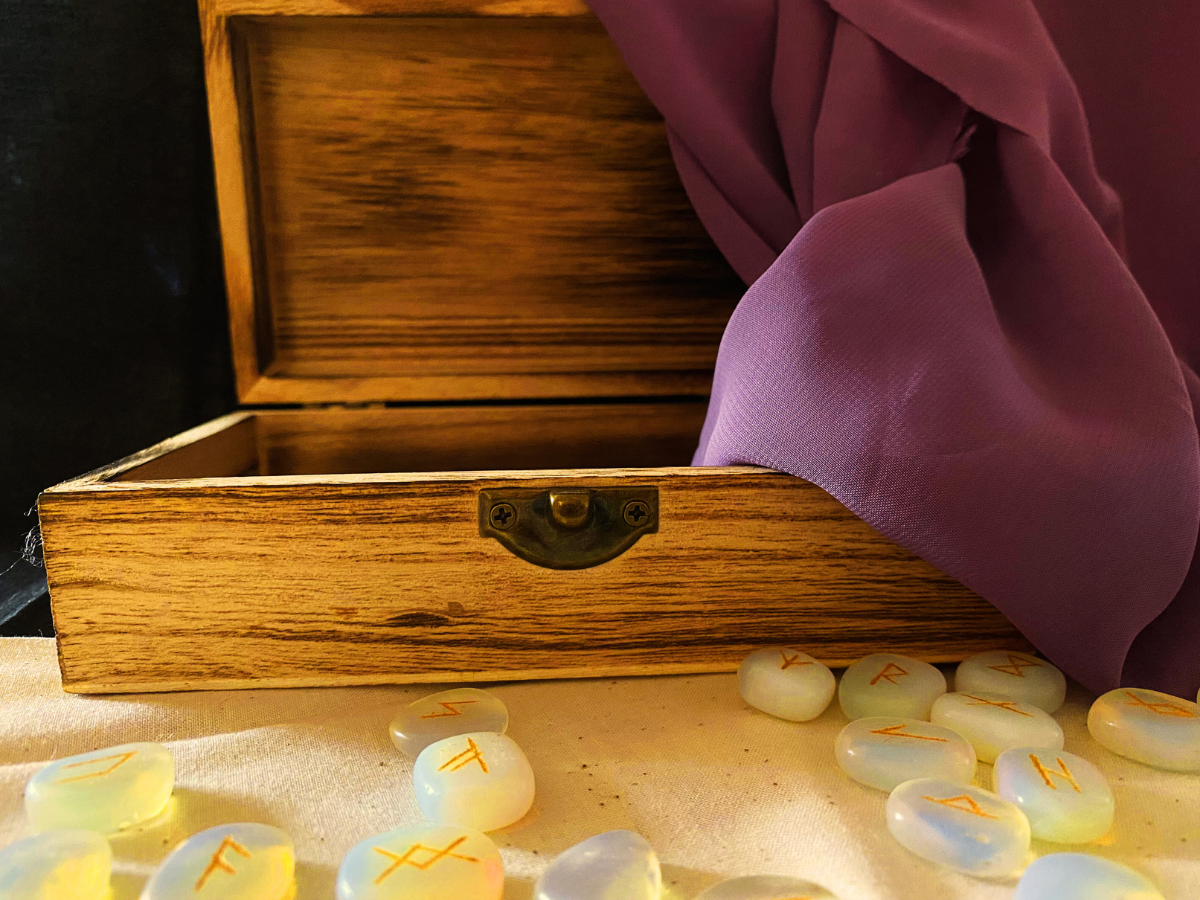
One of the most fun uses of Passive Perception is giving players access to hidden treasure boxes, and the like. Imagine someone's character finding and opening this oaken box of magical runes.
Happy Adventuring with Passive Perception
I know that’s a lot of info to take in. Really though, everything in D&D 5e is a lot to take in, at least until you get used to the game.
Passive perception 5e is the key to unlocking many hidden secrets in your tabletop adventure. There’s no one-size-fits-all answer to passive perception, so don’t hesitate to ask your dungeon master or other players about it.
Most importantly, keep playing. Happy 5e adventuring!
Passively Perceive Eternity TTRPG
Made it this far? I'm glad you liked the article - or at least, I assume you did, having made it to the end.
Since you're here, did you know that Eternity TTRPG is also its own game system? Eternity strives to take the complex concepts of D&D and other TTRPGs and provide a rules-light roleplaying experience, while also giving an in-depth, strategic combat experience.
Want to check it out? You can read more about the Eternity TTRPG Game System, see the game's unique races, unique classes, and even purchase.
Dice, Dungeons, Games & More - Eternity TTRPG
Share This Article

Author - Jacob Tegtman
Dear reader, I hope you enjoyed this article. Tabletop gaming has been a passion of mine since I was 6 years old. I've played just about every game from Dungeons and Dragons to video games like Final Fantasy. These games have inspired me, made me laugh, made me cry, and brought me endless hours of enjoyment.
I started Eternity TTRPG - and the indie tabletop game that goes along with it (Eternity Shop) - to share my love of gaming with others. I believe that in our technology-driven age, tabletop games help bring a sense of magic and community back into our world.
If you love the site, please share it with others! I have lots of gaming-related material for you to peruse and use in your own gaming sessions. If you have any questions about the site or want to contribute, just send me a message using the "Contact" page, which you can find in the site's footer.

